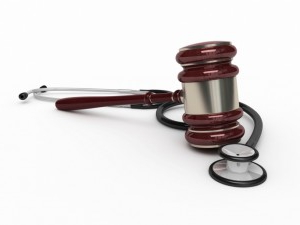This article contains detailed answers to the following questions: what diseases give disability, what disability groups are, and is it possible to get a group only if there is a certain disease, without any physical, mental or mental disorders.

Regulatory documents regulating the situation of a disabled person in the Russian Federation
The legal status of a person recognized as a disabled person is determined primarily by Federal Law No. 181-FZ of November 24, 1995 (as amended by No. 38 of July 21, 2014) "On the Social Protection of Persons with Disabilities in the Russian Federation".
This law contains a list of basic social guarantees for people with disabilities, as well as a list of disabling disorders of the body that make up specific diseases for disability.
According to this law, a disabled person is a person who has persistent impairment of body functions caused by trauma, birth defects or illness, which to some extent limit his life and ability to self-service. This category of citizens more than others needs social assistance and protection of their rights.
The status of a disabled person makes it possible to receive various kinds of benefits and material subsidies established by applicable law.
Assignment of a person with disability status is based on the conclusion of the ITU.
Causes of Disability
- Disability according to the general disease, i.e. received due to any disease.
- From birth or received in childhood, including during the Second World War.
- Received as a result of an injury or mutilation associated with the performance of official duties, including during military service.
- Obtained as a result of the Chernobyl accident, radiation exposure.
- For other reasons.
Grounds for determining disability
There is no specific indication in the law under which diseases disability is given. There are certain criteria by which a special disability group is established by a special body. Each group is characterized by a list of disabilities and the degree to which a person needs help from third parties. 
The main document containing this list is Order No. 664n of 09/29/2014. In accordance with the said Order, in determining the disability group, the degree of restriction of the categories of vital activity is assessed on a scale of one to three:
- 1 degree: any action requires a longer lead time and longer breaks for rest. Assistance from third parties is usually not required.
- 2 degree: the implementation of a certain action requires partial assistance of third parties.
- 3 degree: the implementation of a certain action is impossible without outside help. Regular care is required.
It also establishes the degree of violation of the basic functions of the body, not allowing to fully perform the following actions:
- Self catering.
- Independent movement.
- Orientation in space.
- Communication.
- Monitoring your behavior and giving him an adequate assessment.
- Training and participation in work.
There are 4 degrees of violations characterizing the possibility of implementing the above actions:
1 tbsp. - minor violations;
2 tbsp. - moderate disturbances;
3 tbsp. - expressed;
4 tbsp. - pronounced.
Disability group 1, list of diseases
It is characterized by persistent dysfunctions of the body of the IV degree and limitations of vital activity of 3 degrees. 1 group is established for a period of 1 year with subsequent re-examination.

Among the diseases for which it is possible to establish the first group of disabilities are diseases accompanied by loss of hearing, vision, severe forms of cancer with numerous metastases to various organs and frequent relapses, diseases that cause or are accompanied by irreversible damage to internal organs, complete or partial absence of limbs , diseases of the blood and blood-forming system, some types of disorders of the nervous system, accompanied by paralysis and other motor limitations n functions, other diseases.
Next, we will consider under what diseases disabilities of the II and III groups give.
Disability group 2
The specified group is assigned in the case of the presence of stable functional disorders of the body of the 3rd degree (severe disorders) and disability of the 3rd degree. The term for which it is established is one year.
Among the diseases for which it is possible to obtain the second group of disabilities include disorders of the digestive system and the gastrointestinal tract, pancreas, some types of diseases of the central nervous system and nervous system, impaired hearing and vision, impaired liver, kidney and heart.
3rd group of disability. List of diseases
The easiest of all disability groups is the third. It is characterized by functional disorders of the body of 1 and 2 degrees and limitations of vital activity of 1 degree. It is installed for a period of not more than one year with further re-examination. 
Diseases of the 3rd group include diseases of the central nervous system and PNS, cardiovascular system, musculoskeletal system and others.
It should be noted that the 1st, 2nd and 3rd disability groups do not determine the list of diseases as such. The issue of recognizing a person as a disabled person is decided by the ITU in the presence of the above functional disorders in the body and the ability to carry out the actions necessary for life.
At the same time, it must be pointed out that Decree of the Government of the Russian Federation of February 20, 2006 No. 95 established a list of diseases and irreversible changes in the body in which disability can be obtained indefinitely.
This list contains 23 paragraphs that precisely determine under which diseases they give a disability without a period of re-examination.
